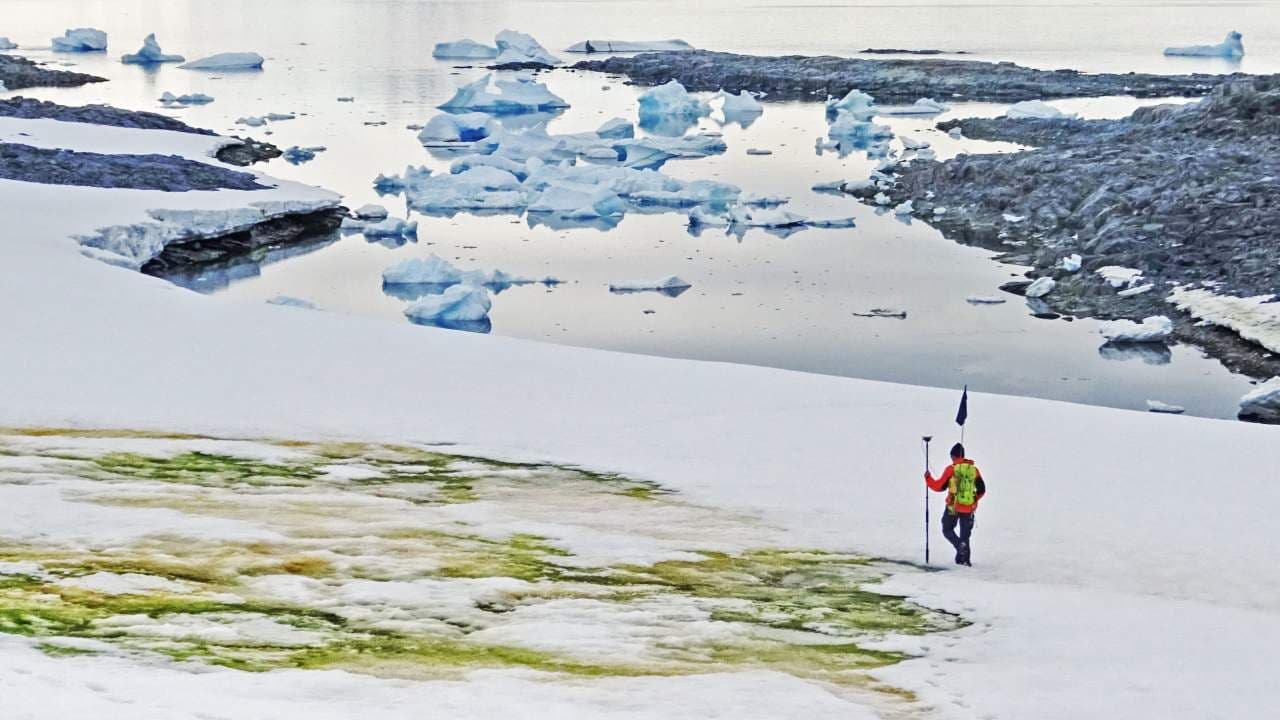Green blooms: Patches of Antarctica’s snow is turning green with algae due to global warming
by FP TrendingResearchers have found that the microscopic algae that grow on the surface of snow along the Antarctic Peninsula are going to further spread with rising temperatures. The results come from creating the first large-scale map of the green algae across the area.
The study was conducted by a team of researchers from the University of Cambridge and the British Antarctic Survey. They studied the European Space Agency (ESA) satellite data from 2017 and 2019 and gathered on-spot measurements to map the microscopic alga.
The microscopic beings, when they bloom on a large area simultaneously, turn the snow bright green and can be spotted from space, scientists have revealed in an article in Nature.

Image credit: Matt Davey
These algae grow along the Antarctic peninsula coastline, which is warmer in comparison to the other regions. Temperatures of a little more than zero degrees Celsius during the Southern Hemisphere's summer months of November to February are optimal conditions for their growth.
According to the researchers, the measurements were taken from Antarctica’s Ryder Bay, Adelaide Island, the Fildes Peninsula and King George Island. These showed that the Antarctic Peninsula has undergone the most rapid warming in the last century. A heatwave in Antarctica had melted around 20 per cent of snow from Eagle Island on the northeastern peninsula of the continent in just about nine days in February this year.
CNN said that such heatwaves were becoming “increasingly common symptoms of the climate crisis”.
The recent study showed that marine birds and mammals affect the growth of the green snow algae. The excrements of these animals are rich, nutritious fertiliser for the algae’s bloom and more than 60 per cent of the green snow algae spread were found near a penguin colony. Other hotspots include a birds’ nesting site and spots where seals come ashore.
“As Antarctica warms, we predict the overall mass of snow algae will increase, as the spread to higher ground will significantly outweigh the loss of small island patches of algae,” said Dr Andrew Gray who is the lead author of the paper and a researcher at the University of Cambridge.
Speaking to CNN, Gray said that while on one hand, melting of snow could lead the algae to grow further, warmer temperatures will affect the other populations on Antarctica like penguins, and the algae could lose their source of nutrients.